Apart from the approaches of both teams, the weather conditions played a vital role in the Bundesliga match between Hannover and Bayer Leverkusen. Leverkusen struggled to stick to their possession-based play after taking the early lead due to heavy snowfall.
Hannover on the other hand were able to fight their way back into the game by using the aerial ability of their strikers. The following analysis will depict the concepts of both sides and draw a conclusion about how far the snowfall affected the game.
Lineups
Hannover lined up in a 4-3-2-1 formation. The home side played with Brazilian Jonathas in attack and very narrow wingers in behind. Walace, Pirmin Schwegler and Marvin Bakalorz were tasked with stopping Leverkusen’s creative midfielders.
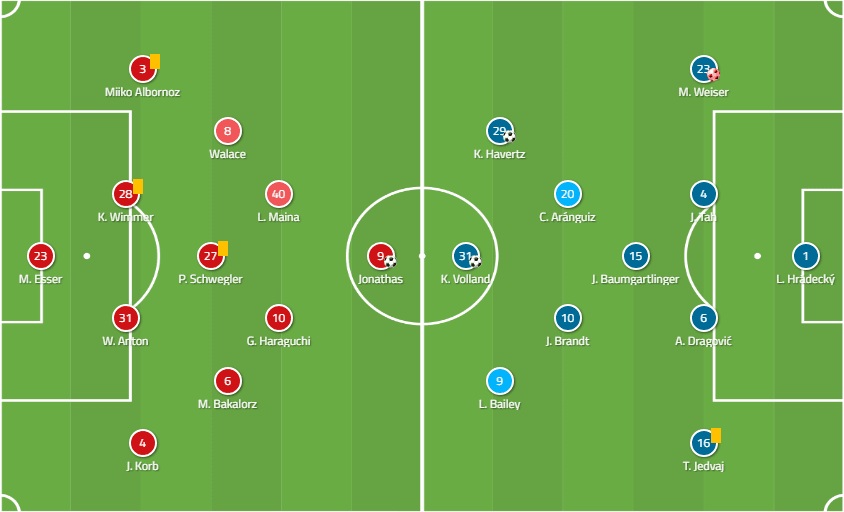
Leverkusen coach Peter Bosz banked on his established 4-3-3 system. The Dutch coach lined up Leon Bailey and Kai Havertz as the two wingers with different roles. In midfield, Julian Brandt was supposed to create chances while single pivot Julian Baumgartlinger had to cover attacks in front of the back four.
Leverkusen dominate the first half
The side of former Ajax coach Bosz used an asymmetrical shape in possession. Both wingers played their own roles fitting their individual strengths. Whereas Kai Havertz often moved into more central areas, left winger Leon Bailey stayed out wide. The German youngster played like a playmaker, moving between the opposition midfield and defensive lines. Bailey on the other hand attempted to make use of his pace in one-on-one situations.
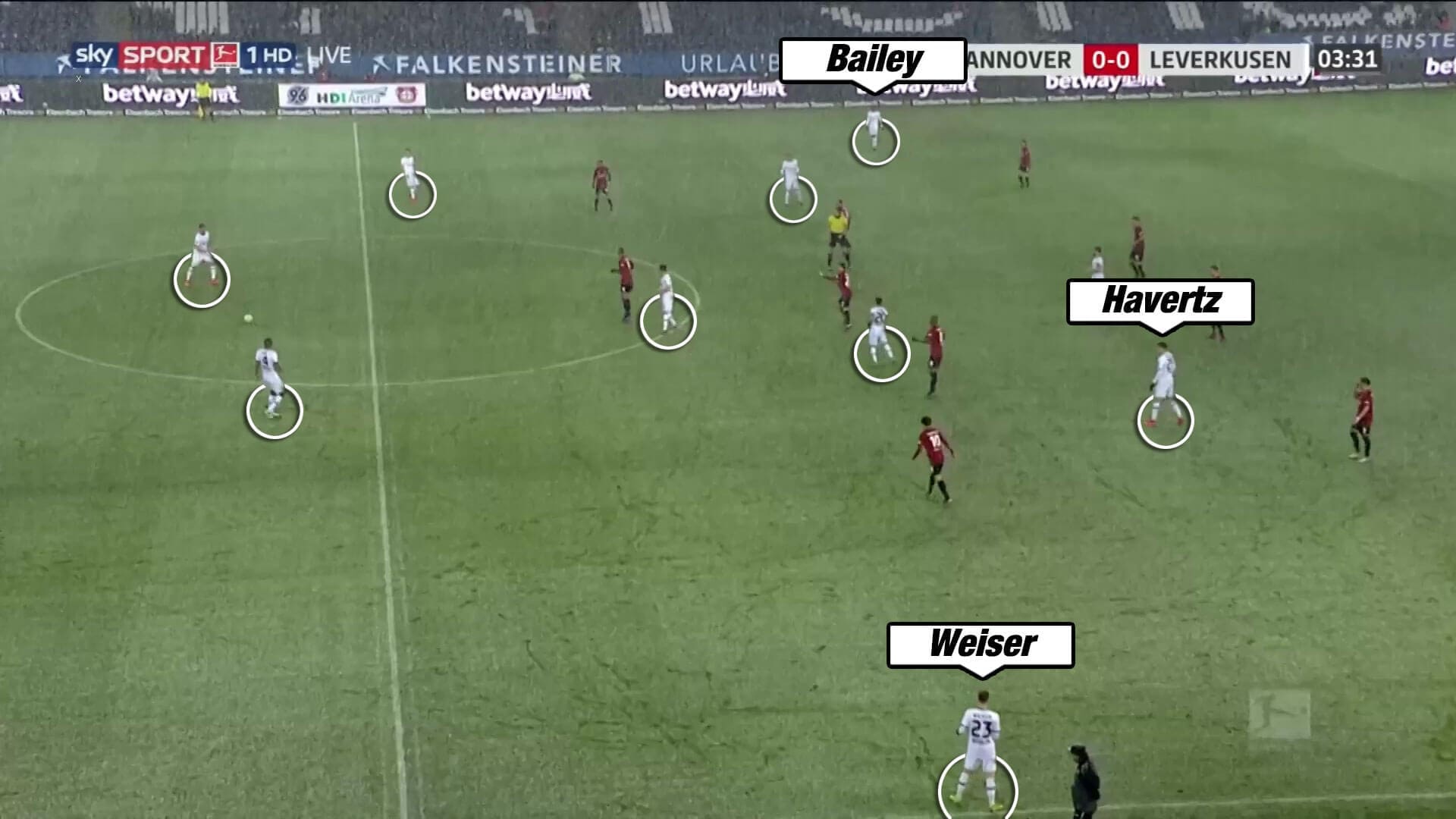
The home side struggled to defend against Leverkusen’s attacks on the left wing. As Hannover’s defensive 4-3-2-1 formation didn’t deploy wide forwards, the full-backs were often left alone when defending on the wing. Right-back Julian Korb in particular had issues defending his side.
That was also due to Leverkusen’s attacking shape. As their left-back Tin Jedvaj stayed in a lower position, opposition winger Linton Maina did not have the urge to drop backwards. However, Leverkusen managed to intelligently create numerical superiority with their central midfielders.
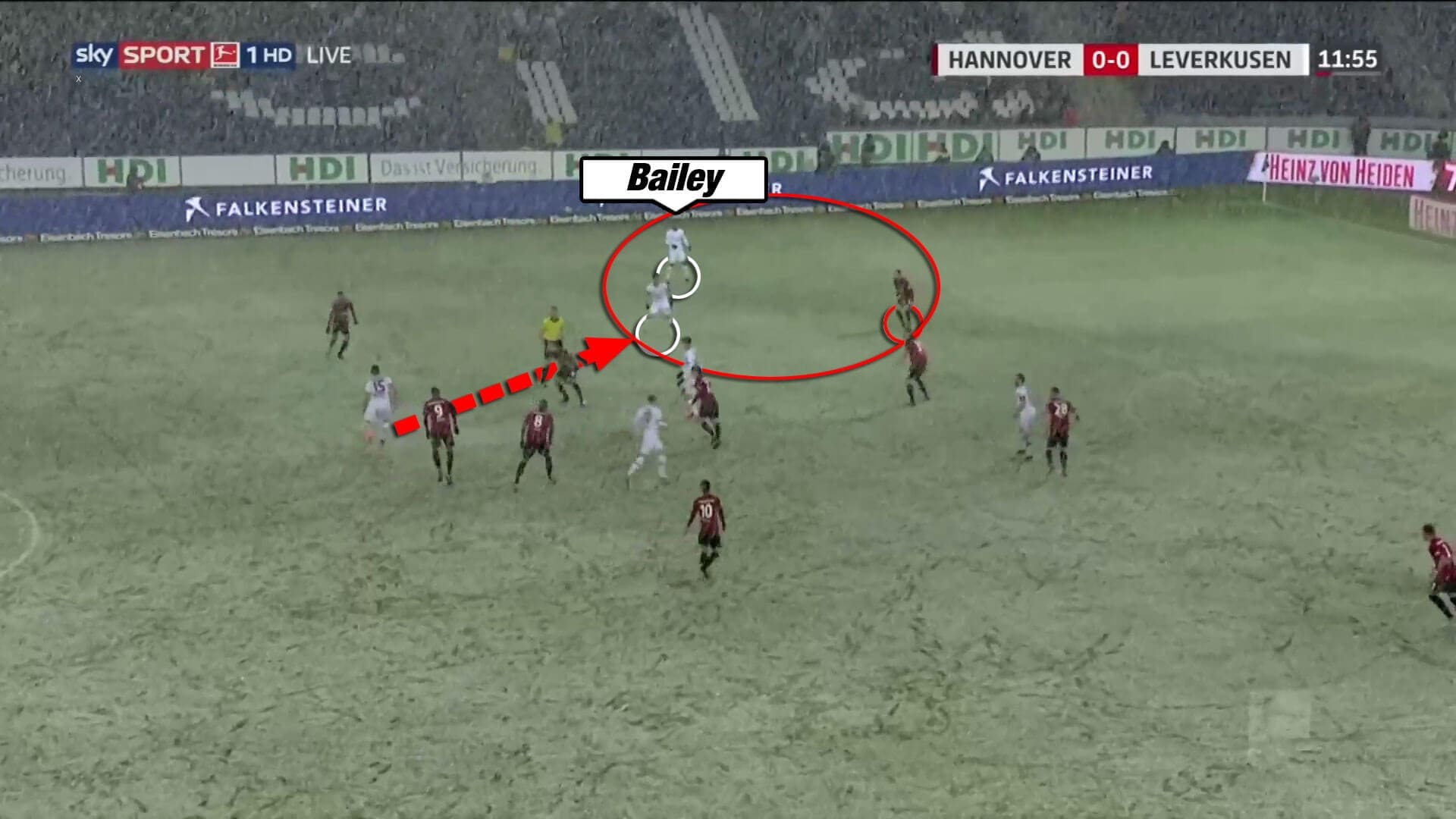
With that concept, Leverkusen were able to create goalscoring opportunities and go 2-0 ahead. Whenever they lost possession, all ball-near players shifted towards the ball to regain possession.
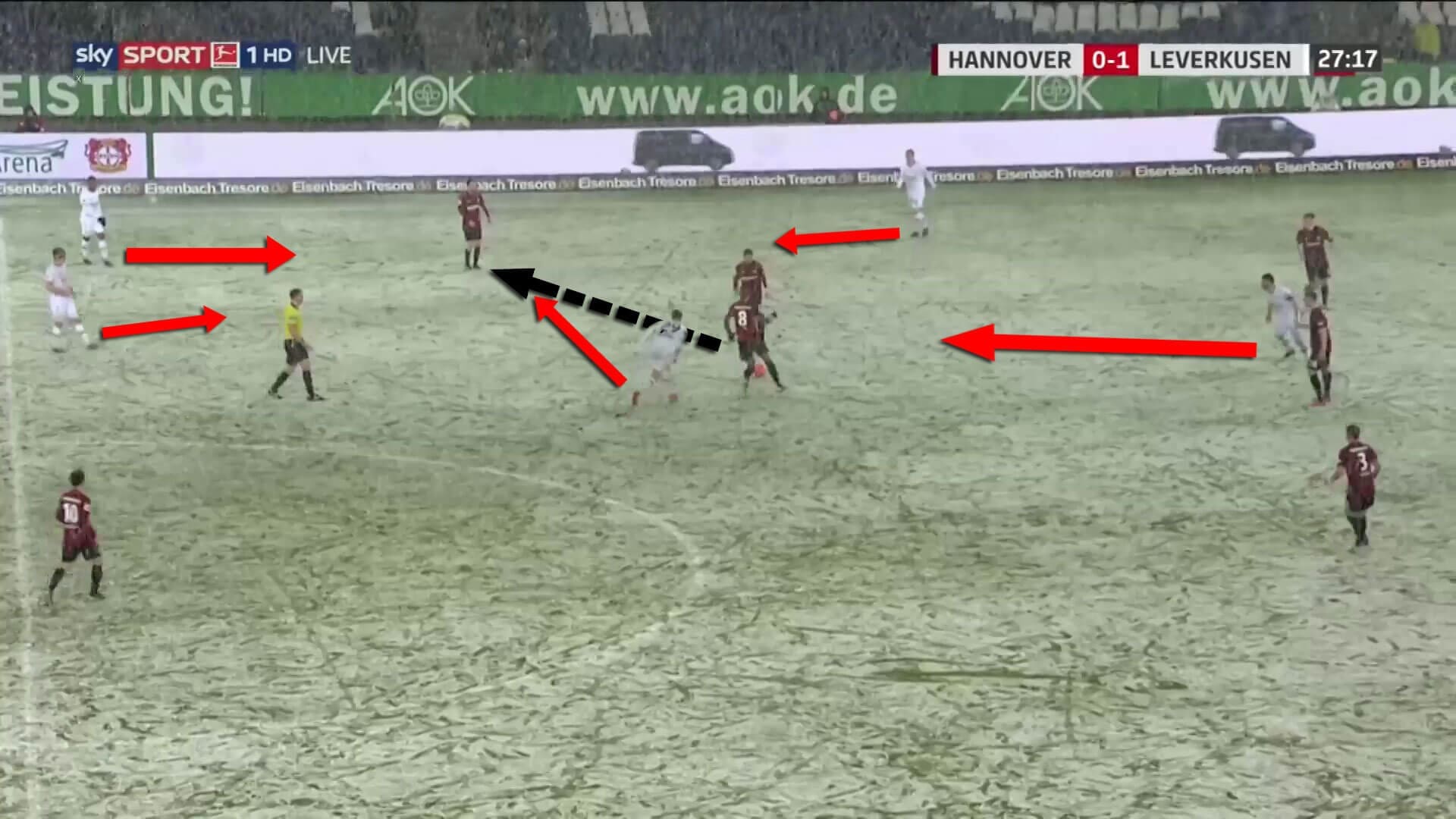
This prevented Hannover from threatening Leverkusen’s goal on the break. Hannover attempted to press in a 4-3-3 system as you can see below.
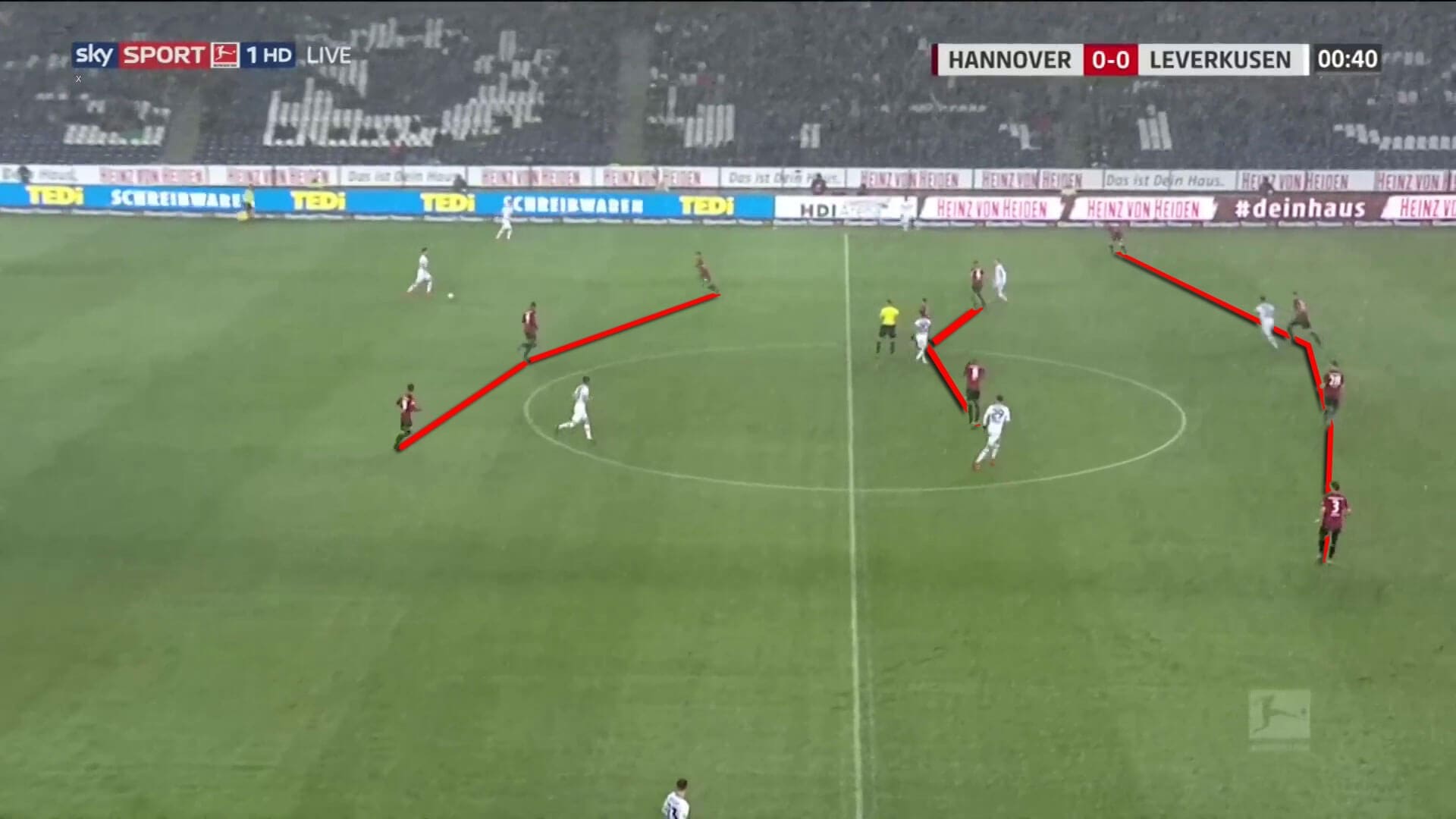
But as the three attackers were not capable of preventing Leverkusen’s defenders from building up, Hannover often missed the presence of the trio in lower areas of the pitch. In addition to that, Hannover’s midfielders acted in a very man-oriented fashion. Therefore, the home side offered space between the lines at times. Leverkusen were capable of exploiting this with either striker Volland dropping or Havertz positioning in this area.
The impact of the snowfall on Leverkusen’s possession-based approach
When taking a look at the statistics, it becomes clear that Leverkusen struggled to establish their short pass combination play due to the heavy snowfall. Their passing accuracy of 77.1% is the lowest value since coach Bosz took over from Heiko Herrlich. When asked for an analysis after the game, the Dutch head-coach even stated:
“The match had nothing to do with football. Therefore, it doesn’t make any sense to analyse this match.”
The performance of Bayer Leverkusen was highly dependent on their possession rate against Hannover as the statistics below show.
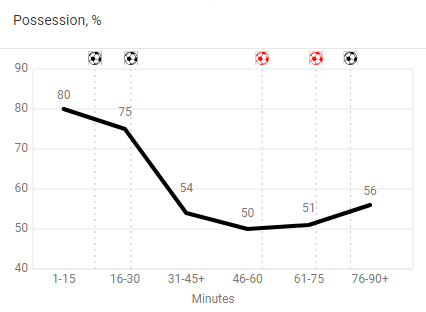
Leverkusen scored their goals within phases with higher possession rates. Furthermore, Bosz’s team conceded two goals when Hannover were even in terms of possession. As the snowfall prevented Leverkusen from implementing their usual passing accuracy and thereby keep possession, one can certainly claim that they were handicapped by the weather conditions. Even Thomas Doll admitted that in the press conference after the match:
“The circumstances were better for my side than for Leverkusen that are known for their combination play.” (Hannover coach Thomas Doll)
Hannover’s changes
In the second half, Hannover coach Doll decided to play with two strikers up front. In Hendrik Weydandt, the German coach brought another attacker with heading ability besides Jonathas.
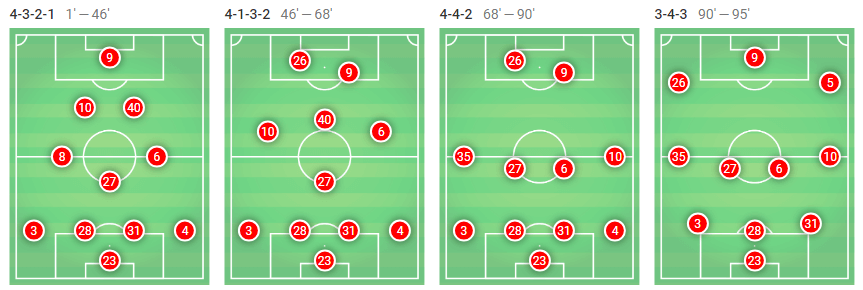
Therefore, it was not a coincidence that both Hannover goals resulted from headers. The strike duo of Weydandt and former La Liga striker Jonathas were able to threaten Leverkusen’s goal from crosses. Since the striker at the near post occupied both opposition centre-backs, left-back Jedvaj needed to defend against the other. As the Leverkusen full-backs are weaker in aerial duels than their central defenders, Hannover could make use of this.
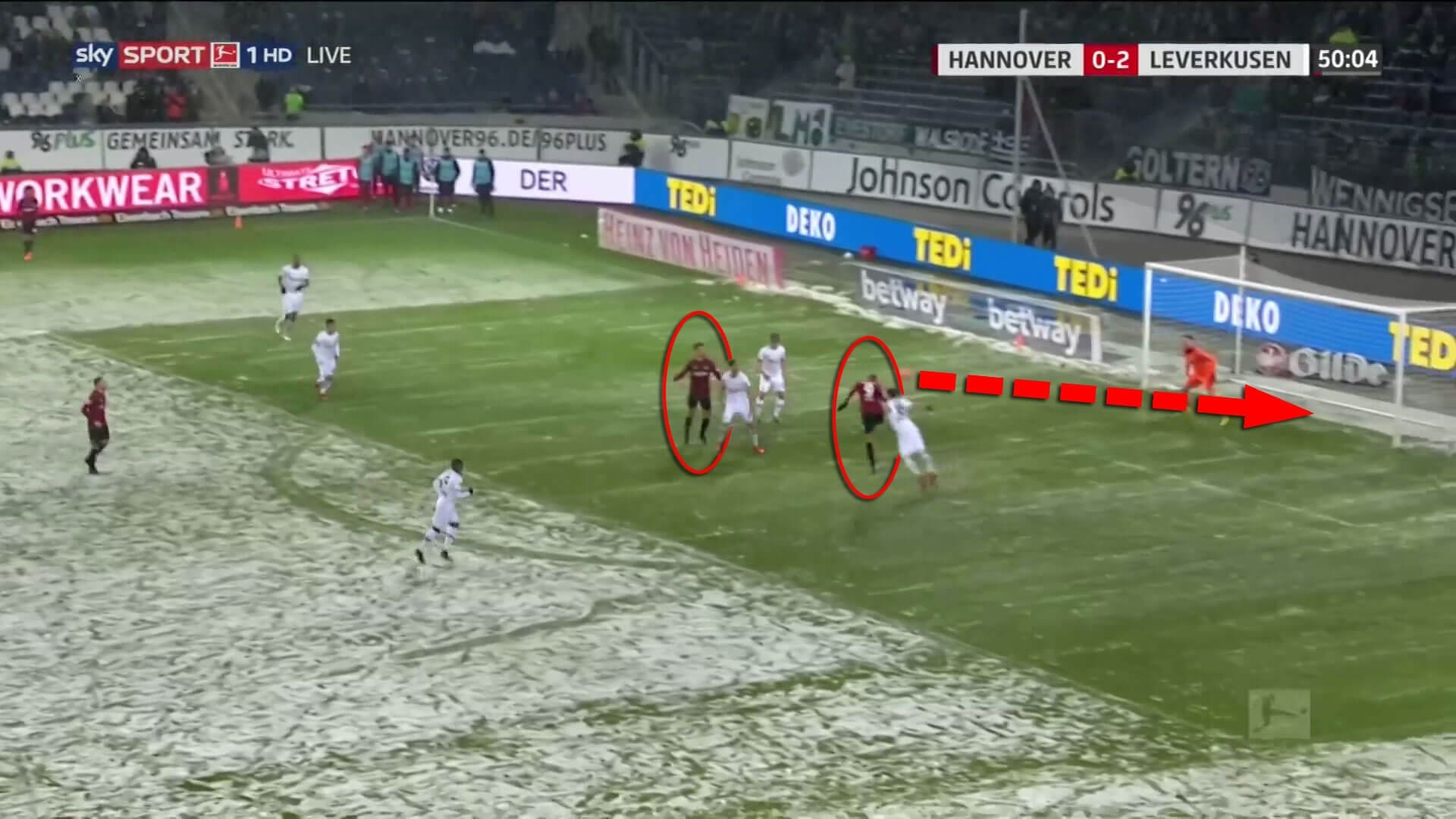
Doll’s side even scored the equaliser in the 73rd minute. After an indirect free-kick, Weydandt headed the ball on target. After a save from goalkeeper Hrádecký and a deflection from a Leverkusen defender, the ball crossed the goal-line.
Due to the narrow positioning of the midfielders, Hannover were able to create numerical superiority in central midfield. That was also possible due to Brandt’s high positioning. This enabled Hannover to regain second balls and to outplay the opposition counter-pressing in the second half more often. As a consequence, left-back Jedvaj sometimes moved forward to press Hannover’s midfielders.
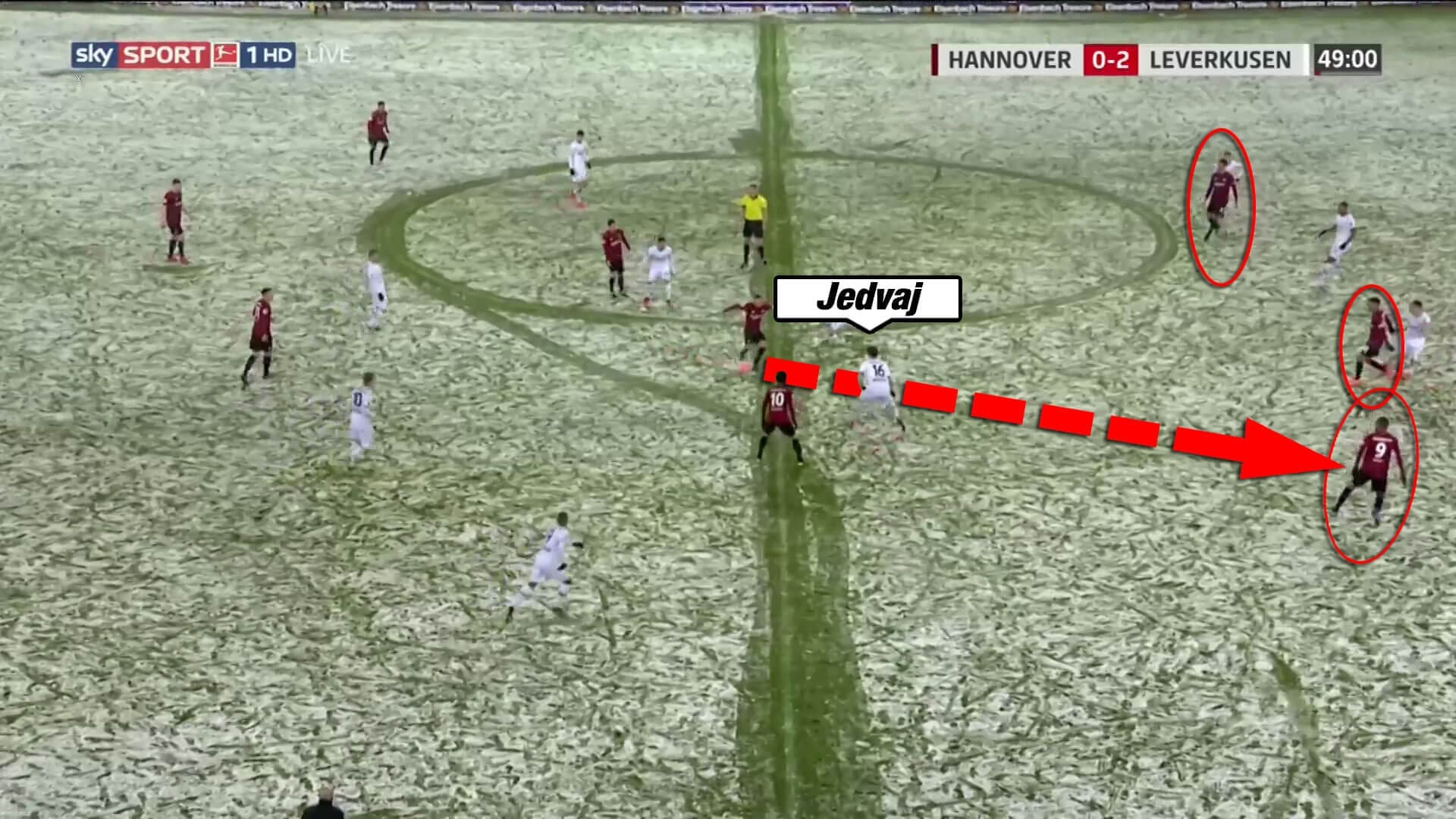
With the help of attacking midfielder Maina, Hannover created 3v3 situations against Leverkusen’s last line of defence. But Hannover’s attackers missed precision to benefit from these situations.
Brandt and Havertz penetrate Hannover’s defence in the final stages
However, Leverkusen were able to win the match in the final stages of the game. Brandt and Havertz both played key roles for their team’s late success. After the substitution of winger Karim Bellarabi, Havertz switched sides and attacked on the left wing. By using rotational movements with advanced midfielder Brandt, Havertz could still keep his play-making role.
The centre-focused formation of Doll’s side also enabled Leverkusen to attack without the need to provide full width. Often Brandt was positioned in the left half-space as the widest Leverkusen player on the left side. Since Hannover’s defensive department was too ball-focused, they still were not able to mark the German international.
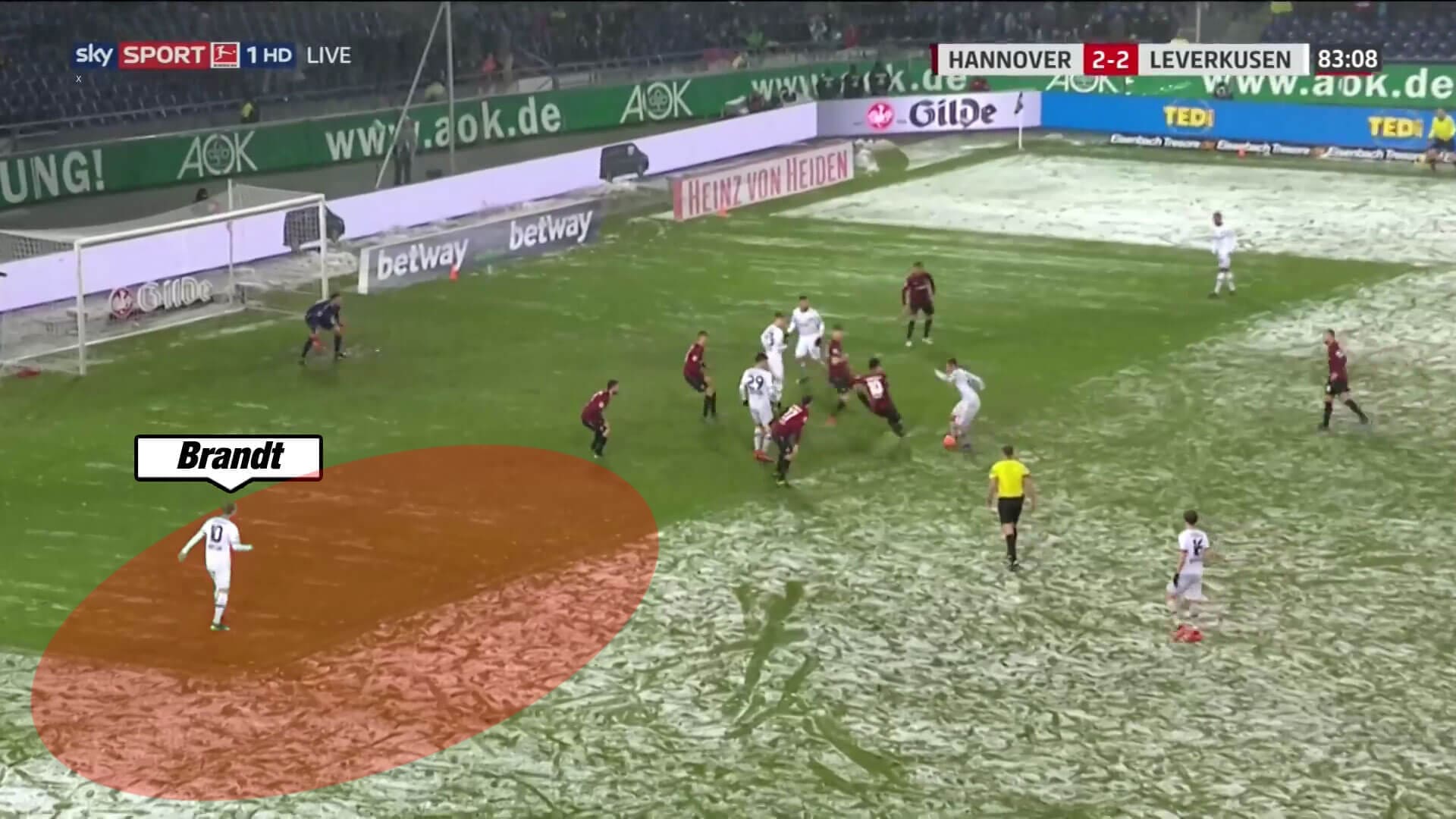
A few minutes before the final whistle, Leverkusen scored the winning goal. As we see below, Brandt receives the ball in the left half-space.
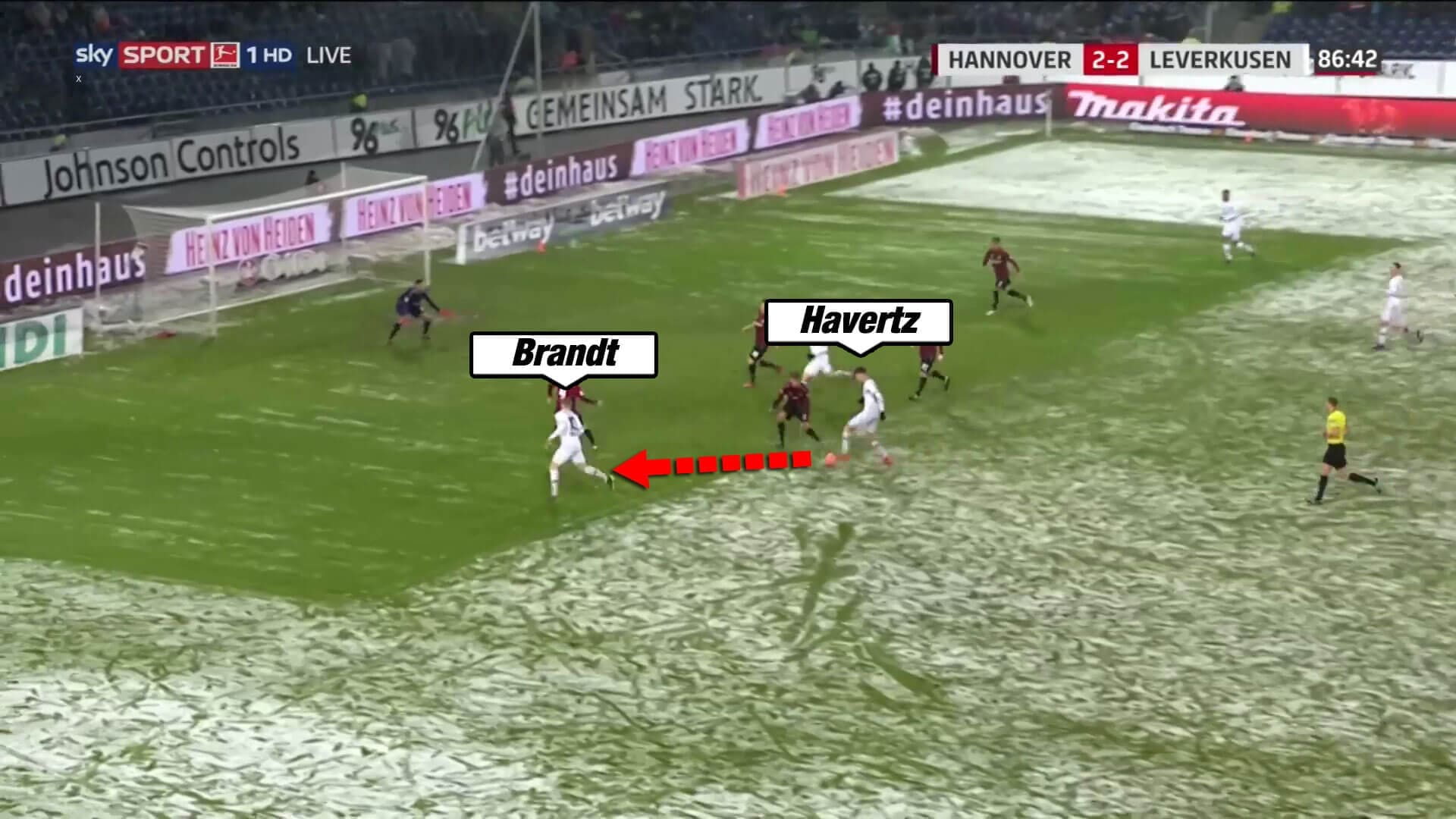
He perfectly delivered a cross onto the head of Havertz in the following image, who heads the ball into the net.
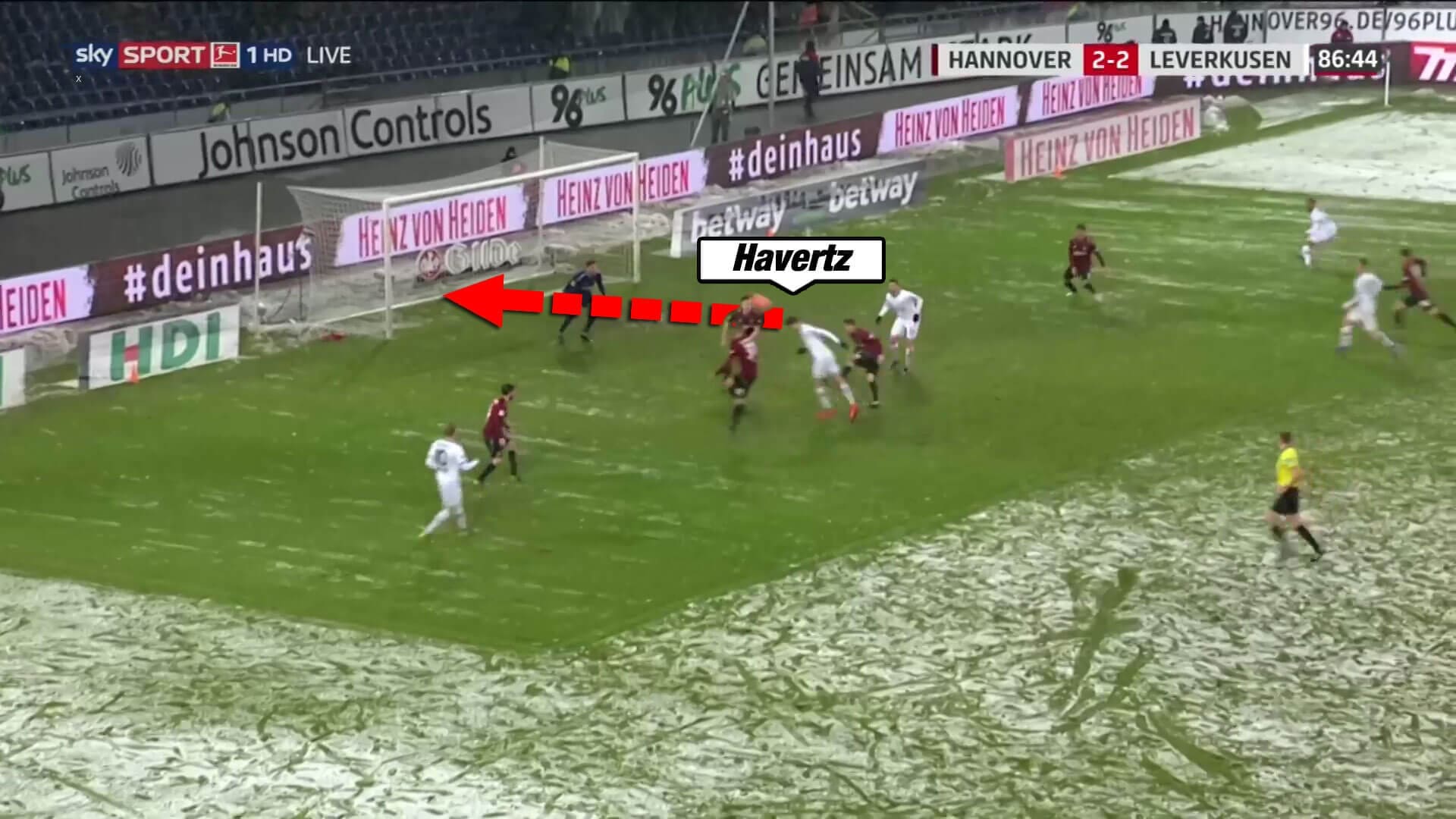
Conclusion
With regards to the snowy ground, Hannover’s approach to put in crosses towards two strikers who are strong in the air was promising. Nevertheless, their defence seemed to be overwhelmed by Leverkusen’s penetrating power up front. Although Bosz’s side struggled to utilise their short-pass combination play, Leverkusen were able to exploit Hannover’s defensive mistakes.
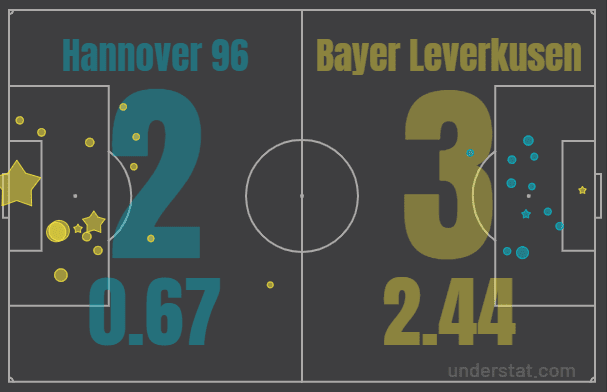
As the xG values show, Leverkusen created more promising chances throughout the whole match. With the roles of Kai Havertz, Julian Brandt and Leon Bailey, Peter Bosz might have established a basis for Bayer to continue their successful path in the Bundesliga. All in all, Leverkusen deserved the three points and will hopefully play under better conditions on the next match day.
If you love tactical analysis, then you’ll love the digital magazines from totalfootballanalysis.com – a guaranteed 100+ pages of pure tactical analysis covering topics from the Premier League, Serie A, La Liga, Bundesliga and many, many more. Pre-order your copy of the March issue for just ₤4.99 here, or even better sign up for a ₤50 annual membership (12 monthly issues plus the annual review) right here.

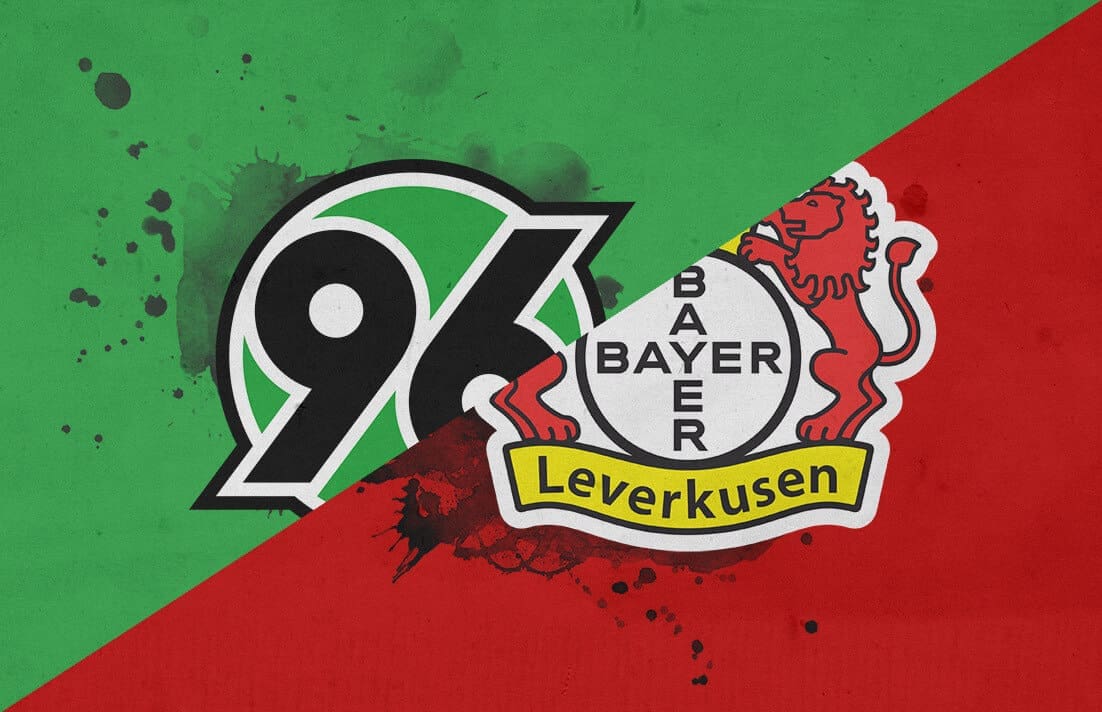


Comments